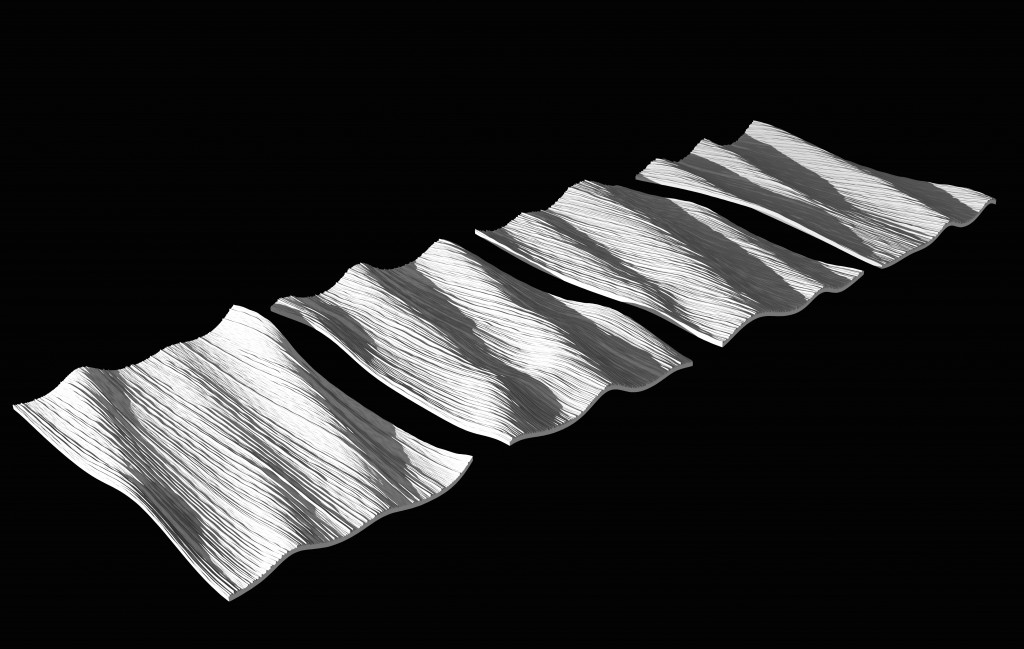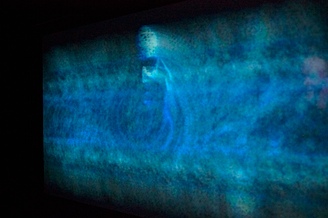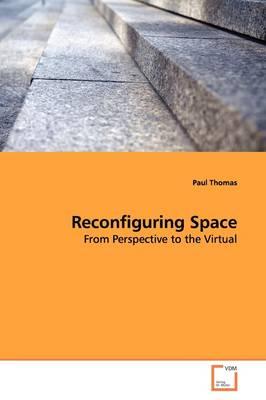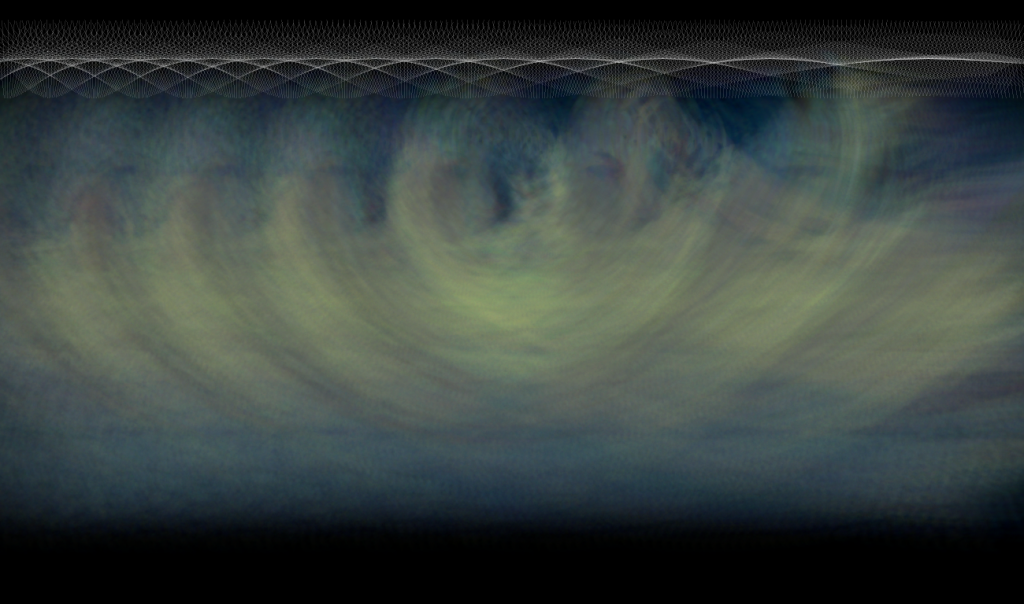Current Projects

Feynmans words from his 1982 paper on the inception of quantum computing driving the actual spin at the atomic core of the new quantum computer. more>>>
“Quantum Consciousness” Thomas, P. Raxworthy K, The Age of Catastrophe, Winnipeg. 13 Nov – 12 Dec 2015
“Quantum Consciousness” Thomas, P. Raxworthy K, Disruption, International Symposium of Electronic Arts, Vancouver. 14th – 18th August 2015.
“Quantum Consciousness” Thomas, P. Raxworthy K, Sound Invasions, Harvestworks, New York 23rd – 25th July 2015

“Nanoessence”, Thomas, P. Raxworthy K, Multi media installation. Intimate Cosmologies: The Aesthetics of Scale in an Age of Nanotechnology, Cornell 15th September – 22nd December 2014
“Multiverse”Multi media installation. The Small Infinite, John Hansard Gallery 05 August – 20 September 2014
“Multiverse“. Thomas P, Raxworthy K Multi media installation. Renew 7th international celebration of interactive media art Copenhagen 28th Oct 2013
“Feynman to Bacon the Probability of Diagrams”, Media Art Histories, Conference, Riga 2013
“Multiverse” Thomas P, Raxworthy K Multi media installation. Transreal Topologies Exhibition, International Symposium in Mixed and Augmented Reality, Adelaide. 30 Sep 2013
“The probability of the diagram” Thomas, P International Symposium of Electronic Arts, Sydney 2013
2012 “Nanoessence” presented as part of the 3rd Art and Science International Exhibition and Symposium planned to be held in the China Science & Technology Museum between Nov. 1st and 30th.
2012 Atomism and many worlds, Colliding Ideas – Art, society and physics symposium, Level 5, 342 Swanston Street Storey Hall, RMIT University Sunday 8th July.
Relive Media Art Histories
Edited by Sean Cubitt and Paul Thomas
In Relive, leading historians of the media arts grapple with this dilemma: how can we speak of “new media” and at the same time write the histories of these arts? These scholars and practitioners redefine the nature of the field, focusing on the materials of history—the materials through which the past is mediated. Drawing on the tools of media archaeology and the history and philosophy of media, they propose a new materialist media art history.
Nanoart: The Immateriality of Art
Examining art that intersects with science and seeks to make visible what cannot ordinarily be seen with the naked eye, Nanoart provides insight into new understandings of materiality and life. It includes an extensive overview of the history of nanoart from the work of Umberto Boccioni to the present day. The author looks specifically at art inspired by nanotechnological research made possible by the scanning tunneling microscope and atomic force microscope in the 1980s, as well as the development of other instruments of nanotechnological experimentation to offer a sustained consideration of this fascinating artistic approach.
Reconfiguring Space
Paul Thomas
The specific focus of my written research is a comparative study of Filippo Brunelleschi’s perspective device and the virtual reality work of Char Davies. This comparative study focuses on the ingredients of both devices as well as the similarities between the environments in which they were demonstrated. Brunelleschi’s Peephole device, according to his biographer Manetti, first demonstrated perspective theory in the early fifteenth century. Brunelleschis device, with its three main components, the mirror, the burnished silver and the painted panel, are examined in regards to the environment it was demonstrated in. The dissertation explores these elements as the essential conceptual ingredients for the reconfiguration of space in modern times. Aspects of Brunelleschi’s device are also examined creatively in my practical work.
Atomism project
Atomism is a collaborative Installation with Kevin Raxworthy that investigates silver, the mirror, and quantum theories of light. Richard Feynman in his 1979 lectures tells that light hits a mirror at all points not just at the point of reflection. All points on the surface of the mirror receive and reflect light based on the spin of the photon which is not visible to the viewer. Atomism explores what happens to the reflected image along the surface of the mirror making what is invisible visible exploring the possibilities of a parallel universe.

Nanoessence
Nanotechnology research project – Nanoessence,
Paul Thomas in collaboration with Kevin Raxworthy
The Nanoessence installation aims to examine life at a sub cellular level, re-examining space and scale within the human context. A single HaCat skin cell is analysed with an Atomic Force Microscope (AFM) to explore comparisons between, life and death at a nano level. The humanistic discourse concerning life is now being challenged by nanotechnological research that brings into question the concepts of what constitutes living. The Nanoessence project installation is based on data gathered as part of a residency at SymbioticA, Centre of Excellence in Biological Arts, University of Western Australia and the Nanochemistry Research Institute, (NRI) Curtin University of Technology.
More information>>>>
Midas
The nanoart project Midas (2007) uses the skin cell as a visual metaphor for exploring the deterritorialised and reterritorialised nanobiological body. In the installation semi autonomous self-organizing nanobots affect the Atomic Force Microscopes (AFM) imaging of the skin cell transmuting it into gold. The Midas project examined what is transferred when skin touched gold. The installation consisted of a data projection and audio work. The recorded sets of data from the AFM in force spectroscopy and contact mode were processed through software applications, translating the relevant information into sound and image files.




